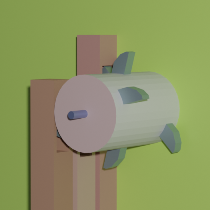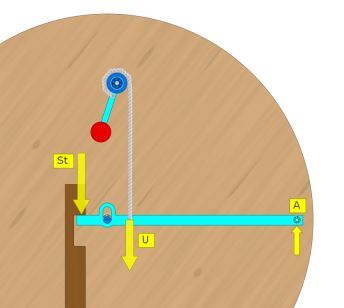
... further steps
in 2022
... two and two
the first wheels
MT18, wheel in wheel
MT18 with two arms
MT18 with three arms
Sketch of wheel 1
AP wheel in 3D
back to next steps
back to startpage
| back to german |

© 2022 by Alois Zimmermann | Kontakt | Impressum | Updates | Ausblick |
... further steps in 2022 - Transfer of momentum to a second system
The new pages mainly deal with findings (and conjectures) about the stamper mechanism.
Those who intensivly study the Bessler wheel and its reconstruction will realise that
1. static imbalance representations as shown in the Maschinentractate do not lead to sucess
2. centrifugal force, pirouette effect and swinging play a major role and that
3. the stamper mechanism is the decisive functional group.
In a way, the stamper mechanism is the secret of the Bessler wheel.
-
- and how do you hide it most effectively? -
by showing it openly - and assigning it a different function; - like Bessler!
The stamper mechanism is not only the control unit (camshaft) as well as the pulse generator
for the generation of imbalance, it is also the decisive element of energy conversion.
Years ago Prof. Evert suspected that Bessler could have somehow managed
to get impulses from one side to work on the opposite side.
Thus a breaking impulse would result in an acceleration and drive the wheel.
The more this theory is taken into account, the more interesting it becomes.
Then everything that Bessler has conveyed to us is actually important, but only incidental.
After all I have the certainty now that the first wheel from Gera had stampers.
On page DT 18 Bessler describes that his second wheel from Draschwitz was only an
enlarged version of the first wheel, and the second definitely had stampers
(3 stampers = 6 pulses per revolution).
This can be seen in the report by Mr Gottfried Teuber.
But what the stamper mechanism can cause that no other mechanism can do?
It produces an enormous impulse when a pin engages the stamper.
The heavy stamper is still standing on the ground, so that there
is a powerful impulse backward on the pin until the stamper starts to move upwards.
Mechanically a very small wrench, but Bessler must have managed to deduce the movement
of the flying weights from it.
How important it was for him to keep this secret hidden can be seen simply from
the fact that Bessler did not mention the stampers in Maschinentractate.
Only in the text of MT13 one can guess a reference:
„ ... or someone would be present who always lift the weight on top at D
like lightning.”
But lifting of the stampers consumes energy. Where is the perpetual motion supposed to come from?
I think I have discovered the secret:
When a stiff pin lifts a stamper, it slows down the wheel.
The resulting backward impulse on the pin is directed to the wheel and energy is extracted from it.
Bessler had now redirected this impulse to a second system and thus done useful work.
As a result, the wheel is slowed down less and the flying weights are accelerated/lifted.
Thus the „secret in the axle” is the secret of the Bessler wheel.
| The „Bessler - Transfer of momentum to a second system” |
 |
The picture on the left shows a wheel and a stamper. The lifting pin is not fixed to the shaft, but it is the green lever with the fulcrum in A. When the wheel rotates clockwise, the lever is pressed down before the stamper starts to move upwards. A force St thus acts on the lifting pin/lever. If you attach a pull rope at U now to swing out a flying weight, the force is almost as big as on St. At A there is a small counterforce only. It is hard to believe, but the flying weight is swung out with practically no effort. If I see this correctly, then the lifting impulse only partially acts as a braking impulse on the wheel, but is rather redirected to swing out the flying weight, i.e., it is transferred to a second system. |
And something else should not go unnoticed:
Did Bessler somehow use the energy of the falling stampers?
He also was an organ builder and writes on page AP 38 that he could hardly have made his wheel,
if he had not mastered this art. Did the stampers possibly fall on small bellows and
their air blasts helped to drive the wheel?
There is at least the small recess in the support 4 of the Merseburg wheel which
connects directly to the (wind)box of the stamper mechanism.
Is it the opening of an air duct or is it only used to engage the wheel
with millimetre precision to the stamper unit?